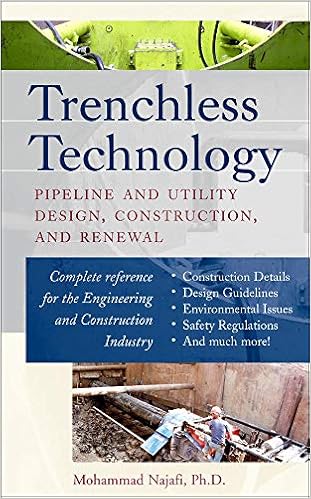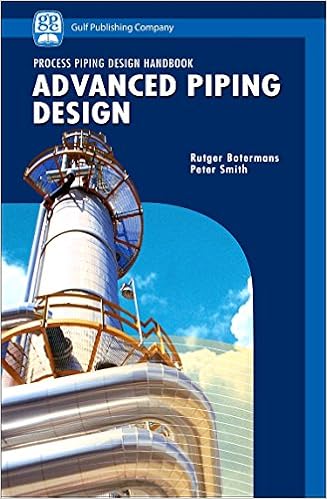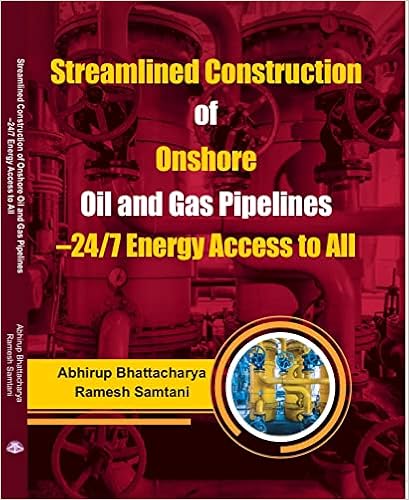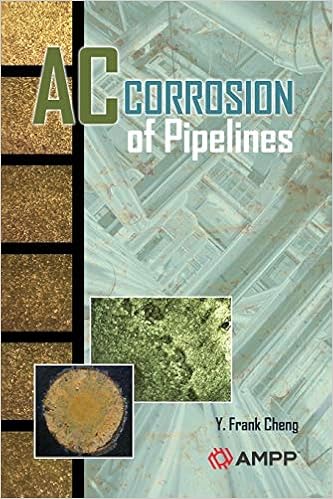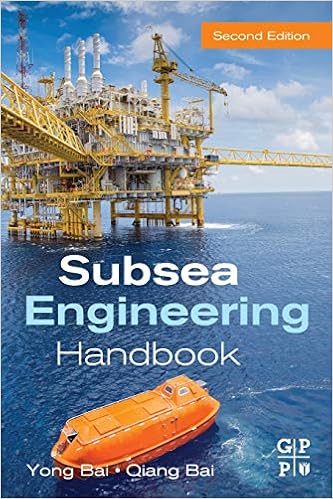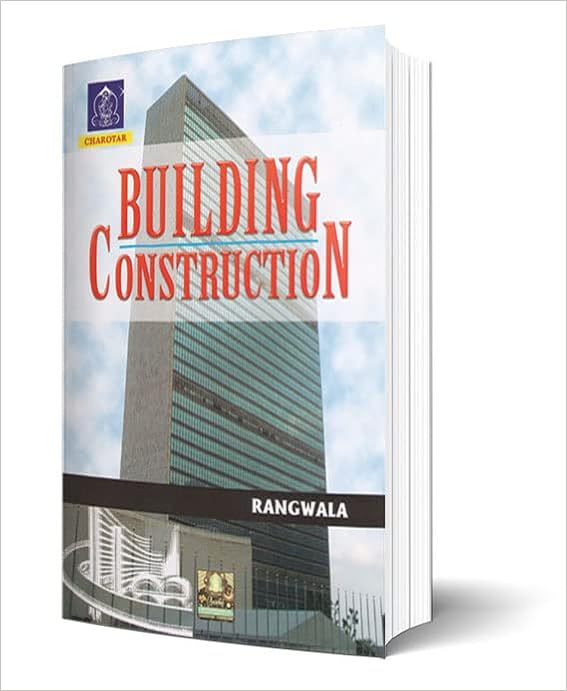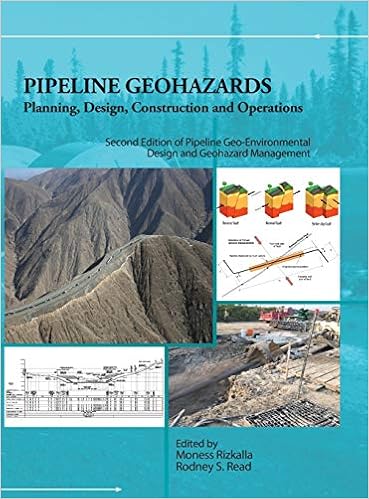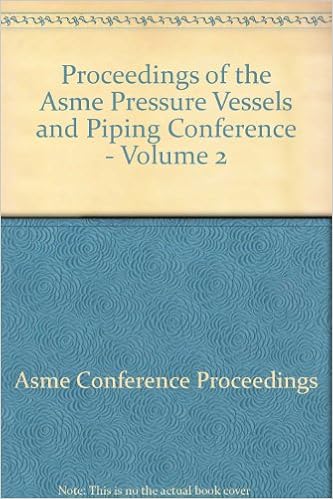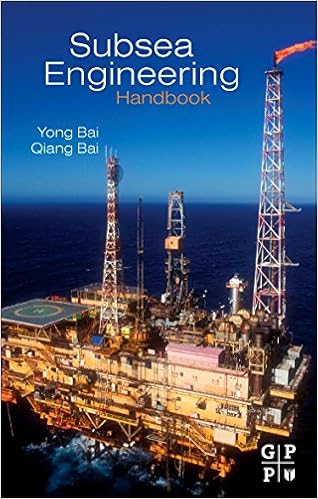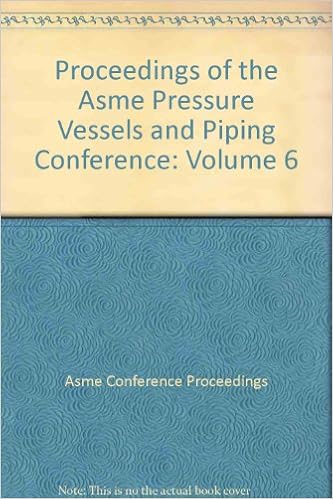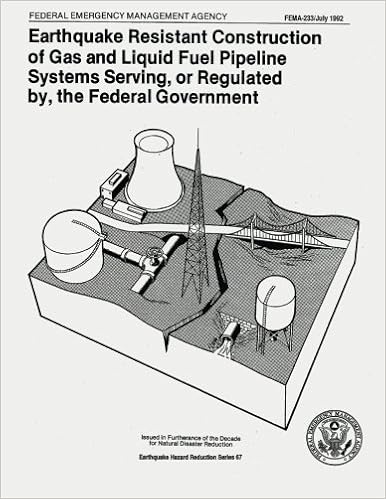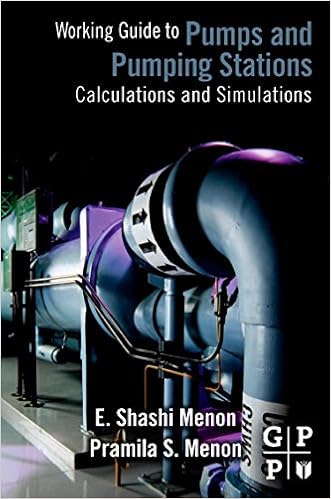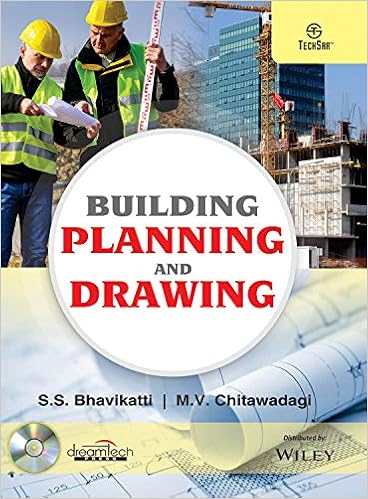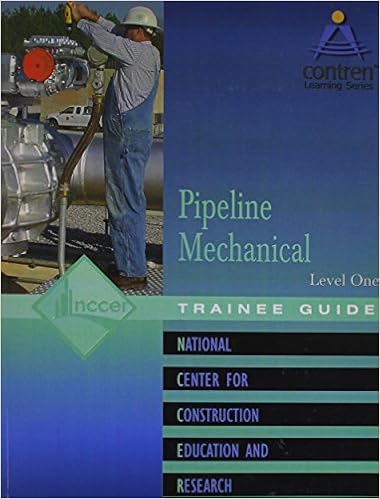Buy Online Pipeline Products from IndianConstructionIndustry.Com in Association with Amazon India
Home » Pipeline
Pipeline Products
Price:  8100
8100
 150000
150000
 8100
8100
 150000
150000
You Save: 141900
Price:  2399
2399
 0
0
 2399
2399
 0
0
You Save: 0
Price:  28929
28929
 33269
33269
 28929
28929
 33269
33269
You Save: 4340
Price:  3764
3764
 9175
9175
 3764
3764
 9175
9175
You Save: 5411
Trenchless Technology: Pipeline and Utility Design, Construction, and Renewal (MECHANICAL ENGINEERING) - Product Features
- Trenchless technology allows for the installation or renewal of underground utility systems with minimum disruption of the surface
- As water and wastewater systems age or must be redesigned in order to comply with environmental regulations, the demand for this technology has dramatically increased. This is a detailed reference covering construction details, design guidelines, environmental concerns, and the latest advances in equipment, methods, and materials.
Advanced Piping Design: 02 (Process Piping Design Handbook) - Product Features
- Advanced Piping Design is an intermediate-level handbook covering guidelines and procedures on process plants and interconnecting piping systems. As a follow up with Smith?s best-selling work published in 2007 by Gulf Publishing Company, The Fundamentals of Piping Design, this handbook contributes more customized information on the necessary process equipment required for a suitable plant layout, such as pumps, compressors, heat exchangers, tanks, cooling towers and more! While integrating equipment with all critical design considerations, these two volumes together are must-haves for any engineer continuing to learn about piping design and process equipment.
Streamlined Construction of Onshore Oil and Gas Pipelines ?24/7 Energy Access to All - Product Features
- Many variables affect the cost of pipeline and oil & gas transportation. The exact break-even point between LNG and pipelines will depend on the volume of natural gas and the distance that it is transported. Pipeline transport is a better option for larger volumes and shorter distances. LNG transport has the lowest costs for smaller volumes (up to 15 bcmpa) and for longer distances. In general, LNG becomes economically feasible in contrast to 4000 kilometres of land pipe or 2000 km of offshore pipe. In India however, there are large lengths of landmass and population centres which are landlocked and can only be connected using pipelines. India has only 12 meters of pipeline per square kilometre of land area compared to 243 meters in USA. Even Pakistan has 21 meters of pipelines per square kilometres of land. Thus lot of scope exists for laying pipelines in India for meeting energy requirements. With 15500 km of upcoming Pipelines proposed to be laid over the next few years, it is imperative that all the resources involved are well trained and have a handy checklist for each activity they perform. In this book we have tried to accumulate our years of experience into simple and activity wise checklists which can be used by the people involved in Oil and Gas pipeline construction.
AC Corrosion of Piplelines - Product Features
- AC Corrosion of Pipelines covers the essential topics related to AC corrosion of pipelines, a problem affecting the safety and reliability of underground pipelines. In addition to the basic principles of AC interference induced by adjacent AC power lines and other sources, the book details the adverse effects of the interference on collocated pipelines, including corrosion and pitting corrosion, coating degradation, deviating of cathodic protection potentials, and the ineffectiveness of cathodic protection systems. Moreover, effective management measures to this problem are discussed. It also covers the DC interference and DC corrosion of the pipelines, as compared to the AC corrosion phenomenon. The book, the first of its kind, provides a complete and comprehensive understanding to the phenomenon from both the fundamentals and the author's research experiences.
- The reader can learn and understand the basics associated with AC corrosion. Moreover, the book provides solutions and industry practice to mitigate, control, and manage AC corrosion of pipelines. The reader can thus learn the appropriate solutions to the problem. Finally, the book also includes DC corrosion of pipelines, in addition to AC corrosion, another essential problem to the buried pipelines with the increasing development of HVDC power lines. All of them contribute to improved knowledge base and recommended solutions for the actual problem threating the integrity and safety of pipelines.
Subsea Engineering Handbook - Product Features
- The offshore industry continues to drive the oil and gas market into deeper drilling depths, more advanced subsea systems, and cross into multiple disciplines to further technology and equipment. Engineers and managers have learned that in order to keep up with the evolving market, they must have an all-inclusive solution reference. Subsea Engineering Handbook, Second Edition remains the go-to source for everything related to offshore oil and gas engineering. Enhanced with new information spanning control systems, equipment QRA, electric tree structures, and manifold designs, this reference is still the one product engineers rely on to understand all components of subsea technology. Packed with new chapters on subsea processing and boosting equipment as well as coverage on newer valves and actuators, this handbook explains subsea challenges and discussions in a well-organized manner for both new and veteran engineers to utilize throughout their careers. Subsea Engineering Handbook, Second Edition remains the critical road map to understand all subsea equipment and technology.
Charotar Building Construction Book - Product Features
- Reading books is a kind of enjoyment. Reading books is a good habit. We bring you a different kinds of books. You can carry this book where ever you want. It is easy to carry. It can be an ideal gift to yourself and to your loved ones. Care instruction keep away from fire.
Pipeline Geohazards: Planning, Design, Construction and Operations - Product Features
- This second edition of the 2008 ASME publication on the same topic is an expanded and updated treatment of a broader range of pipeline geohazard management aspects to serve the global community of pipeliners - both those of a geotechnical background as well as their colleagues in the multi-disciplinary teams that deal practically with these issues. The book strikes a balance between overviews of certain topics and somewhat more detailed treatment of other topics. Recognized experts were invited to contribute entire chapters, short Invited Technical Briefs or longer Invited Perspectives in their areas of specialization.
Subsea Engineering Handbook - Product Features
- Designing and building structures that will withstand the unique challenges that exist in Subsea operations is no easy task. As deepwater wells are drilled to greater depths, engineers are confronted with a new set problems such as water depth, weather conditions, ocean currents, equipment reliability, and well accessibility, to name just a few. A definitive reference for engineers designing, analyzing and instilling offshore structures, Subsea Structural Engineering Handbook provides an expert guide to the key processes, technologies and equipment that comprise contemporary offshore structures.
- Written in a clear and easy to understand language, the book is based on the authors 30 years of experience in the design, analysis and instillation of offshore structures. This book answers the above mentioned crucial questions as well as covers the entire spectrum of subjects in the discipline, from route selection and planning to design, construction, installation, materials and corrosion, inspection, welding, repair, risk assessment, and applicable design solutions. It yields a roadmap not only for the subsea engineer but also the project managers, estimators and regulatory personnel hoping to gain an appreciation of the overall issues and directed approaches to subsea engineering design solutions.
Earthquake Resistant Construction of Gas and Liquid Fuel Pipeline Systems Serving, or Regulated By, the Federal Government: Fema 233 - Product Features
- The vulnerability of gas and liquid fuel pipeline systems to damage in past earthquakes, as well as available standards and technologies that can protect these facilities against earthquake damage are reviewed. An overview is presented of measures taken by various Federal Agencies to protect pipeline systems under their jurisdiction against earthquake hazards. It is concluded that the overall performance of pipeline systems in past earthquakes was relatively good, however, older pipelines and above-ground storage tanks were damaged in many earthquakes. Modern, welded steel pipelines performed well, however, damage occurred in areas of major ground displacements. Available standards and regulations for gas pipelines do not contain seismic provisions. Standards and regulations for liquid fuel pipelines contain only general references to seismic loads. Standards and regulations for above-ground fuel storage tanks and for liquefied natural gas facilities contain explicit seismic design provisions. It is recommended that a guideline for earthquake resistant design of gas and liquid fuel pipeline systems be prepared for Federal Agencies to ensure a uniform approach to the protection of these systems.
Working Guide to Pump and Pumping Stations: Calculations and Simulations - Product Features
- Working Guide to Pumps and Pumping Stations: Calculations and Simulations discusses the application of pumps and pumping stations used in pipelines that transport liquids. It provides an introduction to the basic theory of pumps and how pumps are applied to practical situations using examples of simulations, without extensive mathematical analysis.
- The book begins with basic concepts such as the types of pumps used in the industry; the properties of liquids; the performance curve; and the Bernoullis equation. It then looks at the factors that affect pump performance and the various methods of calculating pressure loss in piping systems. This is followed by discussions of pump system head curves; applications and economics of centrifugal pumps and pipeline systems; and pump simulation using the software PUMPCALC. In most cases, the theory is explained and followed by solved example problems in both U.S. Customary System (English) and SI (metric) units. Additional practice problems are provided in each chapter as further exercise.
Building Planning and Drawing - Product Features
- The book deals with planning of buildings keeping in view good ventilation, thermal comfort, and acoustic requirements apart from satisfying minimum standards and rules and regulations of local authorities, economy and future expansions are also taken care of in the building planning. Drawings are made to give clear details of the buildings. The book explains detail in making building drawings with the aid of computer. This book covers the requirement of building planning and drawing course of diploma as well as degree courses. The practicing engineers will also find it as an excellent reference book.
Seismic Resilience of Natural Gas Systems: Improving Performance (Technical Council on Lifeline Earthquake Engineering Monograph) - Product Features
- Sponsored by the Gas and Liquid Fuels Committee of the Technical Council on Lifeline Earthquake Engineering of ASCE.
- Seismic Resilience of Natural Gas Systems: Improving Performance highlights seismic risk mitigation issues of interest to engineers and managers responsible for the performance and safety of natural gas pipelines. Whether an earthquake fault is evident on the surface or hidden underground, faults are the most catastrophic failure mechanism for pipelines, although ground shaking, soil liquefaction, landslides, and tsunamis also threaten the integrity of pipeline systems. When a pipeline carries natural gas, the effects of a rupture can be hazardous to life and destructive to property.
- This collection of essays examines five different approaches to increasing the seismic resilience of natural gas pipelines: use of geofoam as backfill for pipelines; internal pipe lining techniques to increase pipeline strength; computer-based facility system modeling to anticipate failures; pipeline integrity management, which now includes addressing seismic hazards; and seismic shutoff valves and excess flow valves.
Pipeline Mechanical Level 1 Trainee Guide, Paperback - Product Features
- This exceptionally produced trainee guide features a highly illustrated design, technical hints and tips from industry experts, review questions and a whole lot more! Key content includes Introduction to the Pipeline Industry (Pipeline Core), Liquid Pipeline General Abnormal Operating Conditions (Pipeline Core), Pipeline Mechanic Hand and Power Tools, Piping and Mechanical Blueprint Reading, Tubing, Threaded Pipe, and Hoses, Fasteners, Identify, Install, and Maintain Valves (CT 19.1 through 19.4), Identify Types of Valve Actuators/Operators and Installing Seals and Gaskets.
Critical Urban Infrastructure Handbook - Product Features
- Urban lifelines are buried or aboveground network systems used for water, sewerage, gas, power, and telecommunications. Dedicated to preserving the functions of lifeline systems against natural disasters, the Critical Urban Infrastructure Handbook is a vital compilation of urban utility management. This text utilizes the input of leading experts who have extensive experience with natural disasters, and provides a better understanding of the technical and legal framework of infrastructure construction and operation.
- The book addresses water supply and sewerage, power, gas, telecommunications joint utility corridor lifeline facilities, and other critical civil infrastructure lifelines. It emphasizes the importance of the resilience of lifeline systems against natural disasters in protecting human lives and supporting survivors of disasters as well as in promptly recovering and reconstructing the affected areas. In addition, it also describes the structural damage of nodes and links, as well as the functional damage of the lifeline system from the viewpoint of disaster prevention and mitigation measures.
If you have a business establishment in india,
Contact us
to list your business related to any construction categories.Browse by Topic
Construction Events
To Know more about the events about Air Conditioners, Basements, Bathrooms, Bedrooms, Cabinets, Decorating, Design Plans, Doors, Electrical Lightings, Flooring, Home Security, Kitchen, Landscape, Painting, Plumbing, Fixtures and many more..


